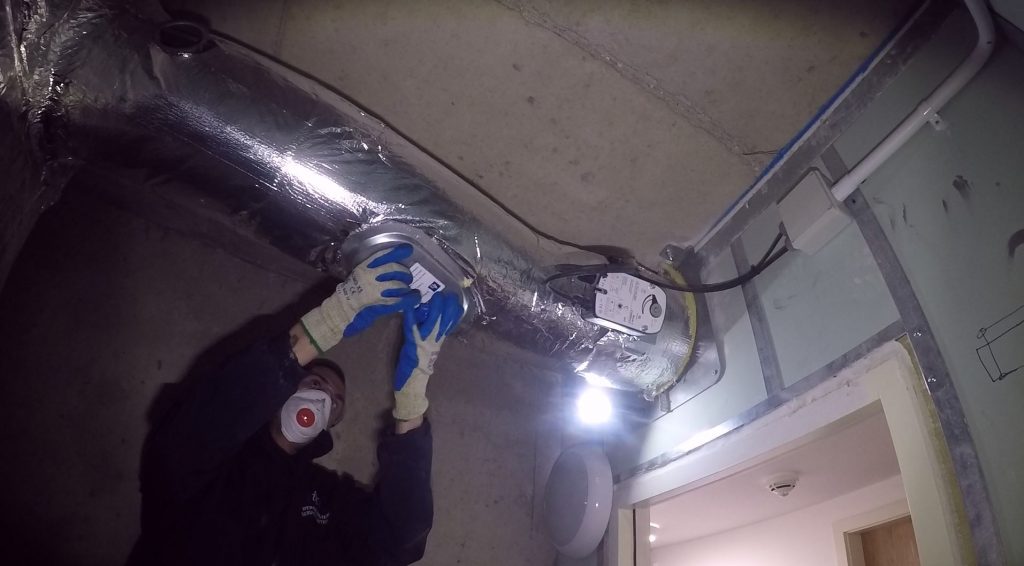When it comes to fire containment systems, having correctly installed, fully functioning fire and smoke dampers is essential. There are legitimate reasons to breach a fire barrier, including installation of heating, ventilation and air-conditioning. In the case of ventilation systems, a fire or smoke damper will be installed within the ductwork, in line with the fire barrier.
Mechanical fire dampers are generally triggered by heat, which melts a fusible link. Motorised dampers, both fire and smoke, have a sensor which detects smoke and activates them to shut. They can also be triggered by the external control panel or the fire alarm system if connected. This seals the barrier and contains fire and smoke within the fire compartment. However, for that to happen dampers must be correctly installed and properly maintained – and not have been tampered with.
Installation
It’s essential that fire and smoke dampers are installed correctly, or they won’t work. They need to be the right size for the duct aperture and be the right way up, or else gravity will prevent them operating.
Maintenance
There are small but essential component parts in fire and smoke dampers and, if just one of them should fail, they will prevent the damper from operating properly. For example, the fusible link could fail, the blades that seal off the opening can become stuck or damaged, and the springs that operate the blades might rust or break. Cleaning is also an element of good maintenance as a build-up of dirt could prevent a damper from operating effectively.

Tampering
This is one of the biggest issues when it comes to the integrity of fire and smoke dampers. We’ve seen them propped open with bits of wood, tubes of mastic and even cutlery. We’ve seen other M&E contractors use a fire damper opening as a quick and easy conduit for cables, passing them through fire and smoke dampers on the way – and even a thin cable will prevent a damper from closing fully.
When dampers fail
The point of a damper is to maintain a fire barrier. If, for any reason, the damper should fail to fully close in an emergency, then the barrier is no longer effective, resulting in flame and smoke passing from one compartment to the next. If the fire system operates as intended as part of a building’s overall fire strategy, there will be enough time to safely evacuate a building. If any part of the fire strategy fails, lives are put at risk.
Testing is essential
You need to be confident your fire and smoke dampers work as intended, and so you should have them tested regularly. If they fail in a test it’s annoying and it will take a little time and money to get them fixed. If they fail in a fire, however, it could be catastrophic.
Our highly experienced team can inspect, fully test and reset fire and smoke dampers. All work is completed in accordance with the latest Technical Bulletin on Testing dampers from the industry body, The Building & Engineering Services Association. We will also provide a comprehensive, photographic fire damper testing report, to prove compliance. Call us today for a quote.
